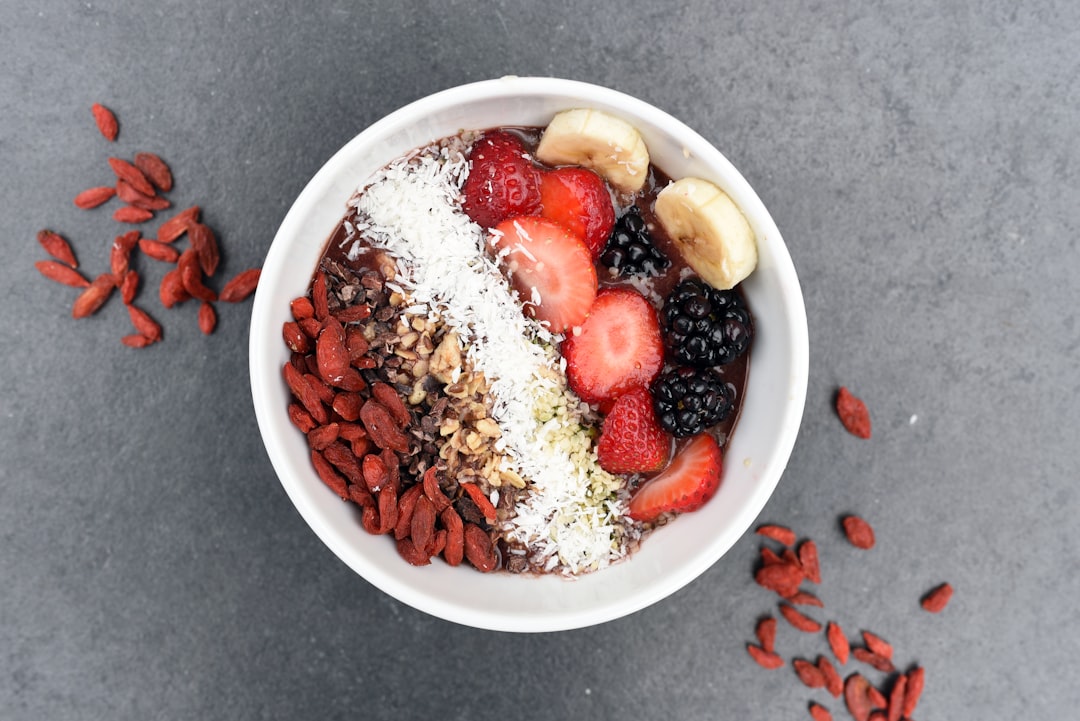The Plate Method is a visual tool designed to help individuals manage their food portions and make healthier dietary choices. It simplifies the process of meal planning by dividing a standard dinner plate into sections that represent different food groups. Typically, half of the plate is allocated for non-starchy vegetables, one-quarter for lean proteins, and one-quarter for whole grains or starchy foods.
This method encourages a balanced intake of nutrients while also promoting mindful eating practices. By focusing on the visual aspect of portion sizes, the Plate Method makes it easier for individuals to understand how to create balanced meals without the need for complicated measurements or calorie counting. This approach is particularly beneficial for those who may feel overwhelmed by traditional dieting methods that often require meticulous tracking of every calorie consumed.
The Plate Method provides a straightforward framework that can be easily adapted to various dietary preferences and cultural cuisines. For instance, someone following a vegetarian diet can fill their plate with legumes and grains, while a meat-eater can opt for chicken or fish alongside their vegetables. The flexibility of the Plate Method allows it to be a sustainable long-term solution for maintaining a healthy lifestyle.
Key Takeaways
- The Plate Method is a visual way of portion control that involves dividing your plate into specific sections for different food groups.
- Understanding portion control is essential for maintaining a healthy diet and managing weight.
- Using the Plate Method can help with weight management, blood sugar control, and overall health improvement.
- To use the Plate Method, fill half your plate with non-starchy vegetables, a quarter with lean protein, and a quarter with whole grains or starchy vegetables.
- Choosing the right plate size is important for proper portion control and balance.
Understanding portion control
Portion control is a critical aspect of healthy eating that involves managing the amount of food consumed in one sitting. It plays a significant role in weight management and overall health, as consuming larger portions than necessary can lead to overeating and weight gain. Understanding portion sizes is essential because many people underestimate how much they eat, often leading to an imbalance in caloric intake versus expenditure.
The concept of portion control is not just about reducing food intake; it’s about learning to recognize appropriate serving sizes that align with individual nutritional needs. One of the challenges with portion control is that serving sizes can vary widely depending on the type of food and how it is prepared. For example, a serving of pasta may look different when served in a restaurant compared to a home-cooked meal.
Additionally, factors such as emotional eating, social settings, and marketing influences can lead individuals to consume more than they realize. By employing strategies like the Plate Method, individuals can develop a better understanding of what constitutes a healthy portion, making it easier to enjoy meals without the guilt associated with overeating.
Benefits of using the Plate Method

The Plate Method offers numerous benefits that extend beyond simple portion control. One of the primary advantages is its ability to promote a balanced diet rich in essential nutrients. By visually dividing the plate into sections for different food groups, individuals are encouraged to include a variety of foods in their meals, which can help prevent nutrient deficiencies.
This method also emphasizes the importance of vegetables, which are often underrepresented in many diets. By filling half the plate with non-starchy vegetables, individuals can increase their fiber intake while reducing overall caloric consumption. Another significant benefit of the Plate Method is its ease of use.
Unlike calorie counting or weighing food, which can be tedious and time-consuming, the Plate Method simplifies meal preparation and encourages intuitive eating. This approach fosters a healthier relationship with food by allowing individuals to focus on enjoying their meals rather than obsessing over numbers. Furthermore, the Plate Method can be easily adapted to suit various dietary needs and preferences, making it an inclusive option for people from diverse backgrounds and lifestyles.
How to use the Plate Method
| Food Group | Portion Size |
|---|---|
| Vegetables | Fill half of the plate |
| Proteins | Fill a quarter of the plate |
| Grains | Fill a quarter of the plate |
| Fruits | Add a serving on the side |
| Dairy | Add a serving on the side |
Using the Plate Method involves a few straightforward steps that can be easily integrated into daily meal routines. First, start by selecting an appropriate plate size; typically, a standard dinner plate works best. Next, visualize or mark the plate into sections: half for non-starchy vegetables, one-quarter for lean protein sources, and one-quarter for whole grains or starchy foods.
This visual cue helps individuals understand how to balance their meals effectively without needing precise measurements. When preparing meals, focus on filling half of the plate with colorful vegetables such as leafy greens, bell peppers, broccoli, or carrots. These foods are low in calories but high in vitamins and minerals, making them an excellent choice for promoting satiety without excess caloric intake.
For the protein section, opt for lean meats like chicken or turkey, fish, tofu, or legumes such as beans and lentils. Finally, fill the remaining quarter with whole grains like brown rice, quinoa, or whole-grain pasta. This method not only ensures a balanced meal but also encourages variety and experimentation with different foods.
Choosing the right plate
Selecting the right plate is an essential component of successfully implementing the Plate Method. The size and type of plate can significantly influence portion sizes and overall eating habits. A standard dinner plate typically measures around 10-12 inches in diameter; however, using smaller plates can help create an illusion of larger portions while naturally reducing overall food intake.
Research has shown that people tend to eat less when served on smaller plates because they perceive their meals as more substantial. In addition to size, consider the design and color of the plate as well. Plates with bold colors or patterns can enhance visual appeal and make meals more enjoyable.
Conversely, plain white plates may help highlight the colors of the food itself, making vegetables and other healthy options more enticing. Ultimately, choosing a plate that resonates with personal preferences while adhering to size guidelines can reinforce positive eating habits and support successful portion control.
Balancing your plate with the Plate Method

Balancing your plate using the Plate Method involves more than just filling designated sections; it requires thoughtful consideration of food choices within each category. When selecting non-starchy vegetables for half of your plate, aim for a variety of colors and textures to maximize nutrient intake. Dark leafy greens like spinach or kale provide iron and calcium, while brightly colored vegetables such as carrots and bell peppers offer antioxidants and vitamins A and C.
For the protein section, prioritize lean sources that are lower in saturated fat while still providing essential amino acids necessary for muscle repair and overall health. Options like grilled chicken breast, fish rich in omega-3 fatty acids such as salmon, or plant-based proteins like chickpeas or lentils can be excellent choices. In the carbohydrate section, focus on whole grains that are high in fiber and nutrients; brown rice, quinoa, and whole-grain bread are all excellent options that provide sustained energy throughout the day.
Tips for mastering portion control
Mastering portion control requires practice and mindfulness in eating habits. One effective strategy is to serve meals at the table rather than family-style on platters; this encourages individuals to take only what they need rather than mindlessly filling their plates from shared dishes. Additionally, using measuring cups or kitchen scales occasionally can help reinforce an understanding of appropriate serving sizes without becoming overly reliant on them.
Another helpful tip is to slow down during meals and engage in mindful eating practices. Taking time to savor each bite allows individuals to better recognize feelings of fullness and satisfaction. Chewing food thoroughly and putting utensils down between bites can enhance this experience.
Furthermore, being aware of external cues such as portion sizes at restaurants or packaged foods can help individuals make informed decisions about what constitutes an appropriate serving size in various contexts.
Overcoming challenges with portion control
Despite its benefits, practicing portion control can present challenges that may hinder progress toward healthier eating habits. Social situations often pose difficulties; gatherings with friends or family may lead to overeating due to peer pressure or an abundance of tempting foods. To navigate these scenarios successfully, it’s essential to plan ahead by eating a small snack before attending events or bringing along healthy options to share.
Emotional eating is another common challenge that can disrupt portion control efforts. Many individuals turn to food for comfort during stressful times or as a reward after a long day. Recognizing triggers for emotional eating is crucial; keeping a food journal can help identify patterns and develop healthier coping mechanisms such as engaging in physical activity or practicing relaxation techniques instead of reaching for food.
Incorporating the Plate Method into your daily routine
Incorporating the Plate Method into daily routines involves making conscious choices during meal preparation and planning. Start by assessing your current eating habits; identify areas where you may be consuming larger portions than necessary or lacking variety in your meals. Gradually introduce the Plate Method by using it for one meal per day before expanding its use to all meals throughout the week.
Meal prepping can also facilitate adherence to the Plate Method by ensuring that balanced meals are readily available during busy days. Preparing large batches of healthy dishes that align with the Plate Method allows individuals to simply portion out servings when it’s time to eat. Additionally, involving family members in meal planning can create a supportive environment where everyone learns about balanced eating together.
Monitoring progress and making adjustments
Monitoring progress while using the Plate Method is essential for ensuring its effectiveness over time. Keeping track of how meals are balanced according to the method can provide valuable insights into dietary habits and areas needing improvement. Consider maintaining a food diary where you document what you eat each day along with notes on how you felt after meals—this reflection can help identify patterns related to hunger cues and satisfaction levels.
As you monitor your progress, be open to making adjustments based on your experiences and changing needs. If certain foods consistently leave you feeling unsatisfied or if you find yourself struggling with specific portions, don’t hesitate to modify your approach accordingly. The goal is not perfection but rather finding a sustainable balance that works for you personally.
Seeking professional guidance for portion control
For those who find it challenging to implement portion control effectively on their own, seeking professional guidance from registered dietitians or nutritionists can be immensely beneficial. These experts can provide personalized advice tailored to individual health goals, dietary preferences, and lifestyle factors. They can also offer education on nutrition science that empowers individuals to make informed choices about their eating habits.
Working with a professional can also help address underlying issues related to emotional eating or disordered eating patterns that may complicate portion control efforts. Through counseling sessions focused on nutrition education and behavioral strategies, individuals can develop healthier relationships with food while learning practical skills for managing portions effectively over time.



